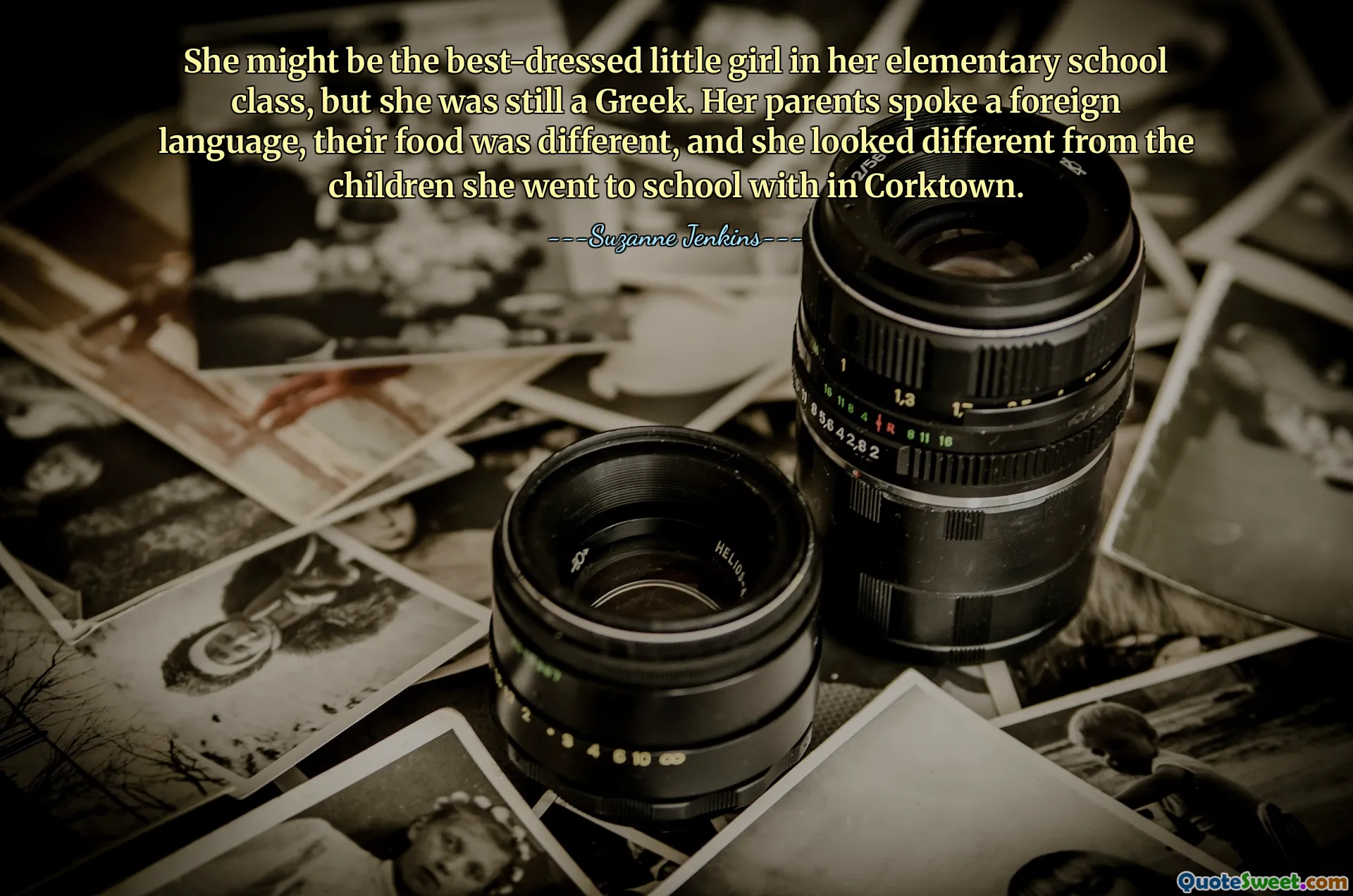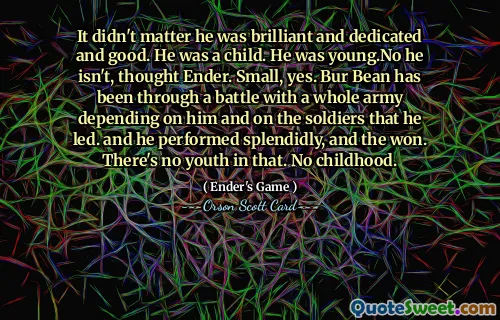
She might be the best-dressed little girl in her elementary school class, but she was still a Greek. Her parents spoke a foreign language, their food was different, and she looked different from the children she went to school with in Corktown.
This quote sheds light on the enduring realities of cultural identity and the subtle ways in which societal differences manifest, especially for children in diverse communities. Despite her outward appearance and seemingly superficial social status, as the best-dressed girl in her class, her internal sense of her origins and her family’s cultural background remain intact. It highlights the idea that cultural identity isn't something that can be easily disguised or erased through appearance alone; it remains deeply embedded within a person and can influence how they are perceived and treated by others. The mention of her parents speaking a foreign language and their different cuisine emphasizes the visible markers of her ethnicity, which set her apart in the eyes of her peers. This can lead to feelings of otherness, highlighting the quiet struggles faced by immigrant families in maintaining their cultural practices amidst the pressures of assimilation. Such experiences are especially poignant during childhood, a formative time when identity begins to solidify and social belonging is crucial. The quote invites us to consider how diversity enriches our communities but also presents challenges in forming a cohesive sense of belonging. It underscores that true acceptance requires a recognition and appreciation of cultural differences rather than superficial judgments. Moreover, it reminds us that heritage and identity leave a lasting imprint, influencing perceptions, interactions, and self-awareness throughout life. Embracing this diversity not only broadens our understanding of others but also enriches our collective human experience.










